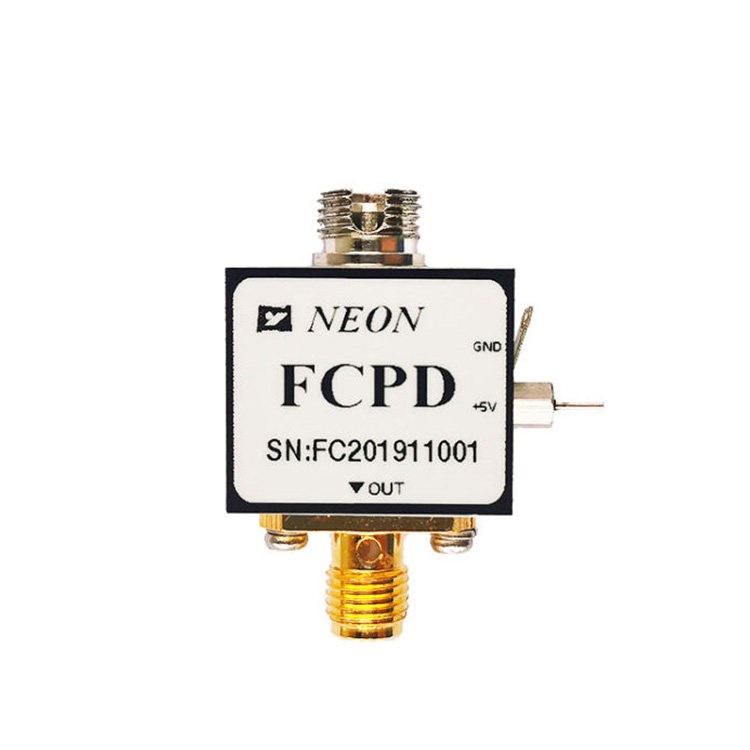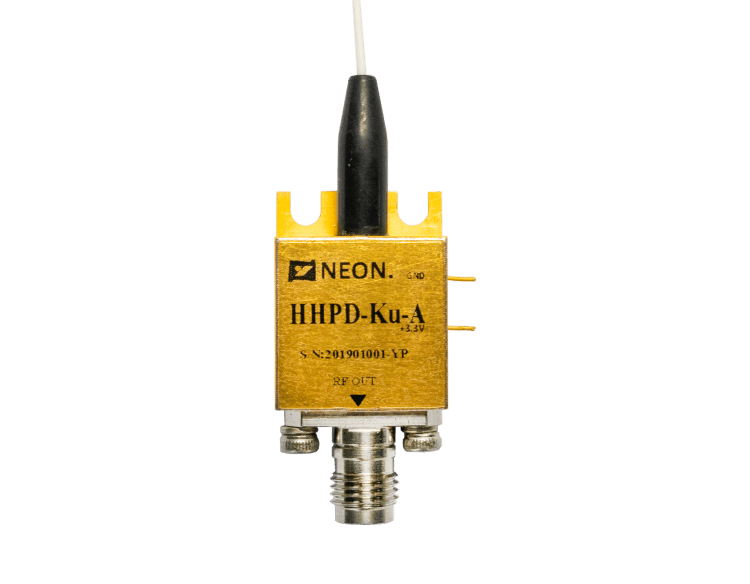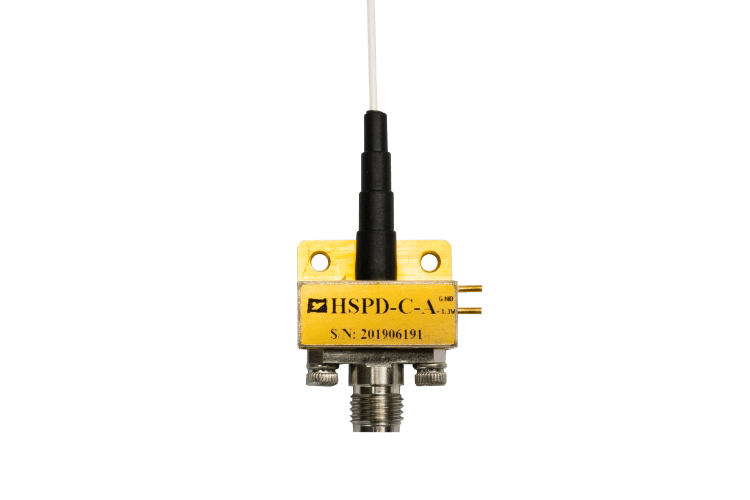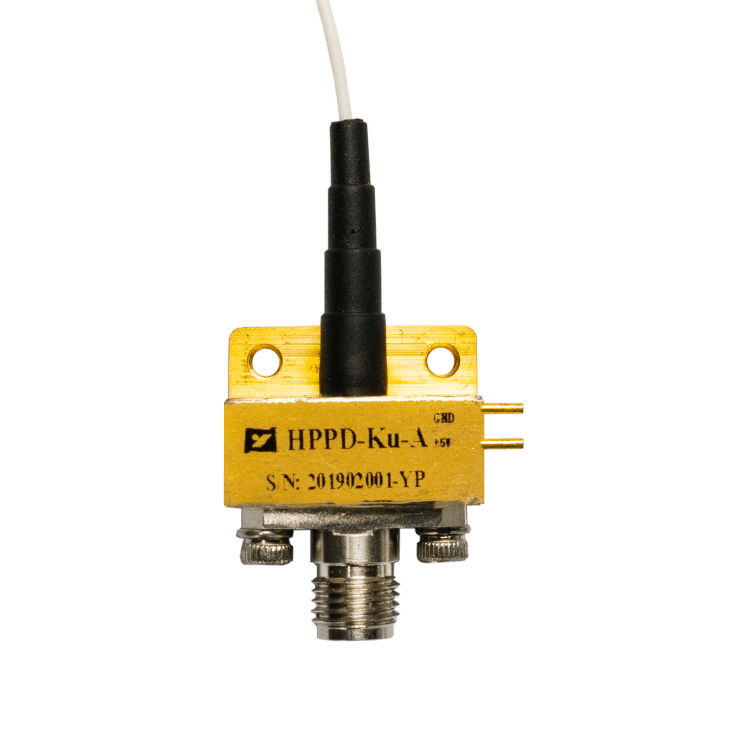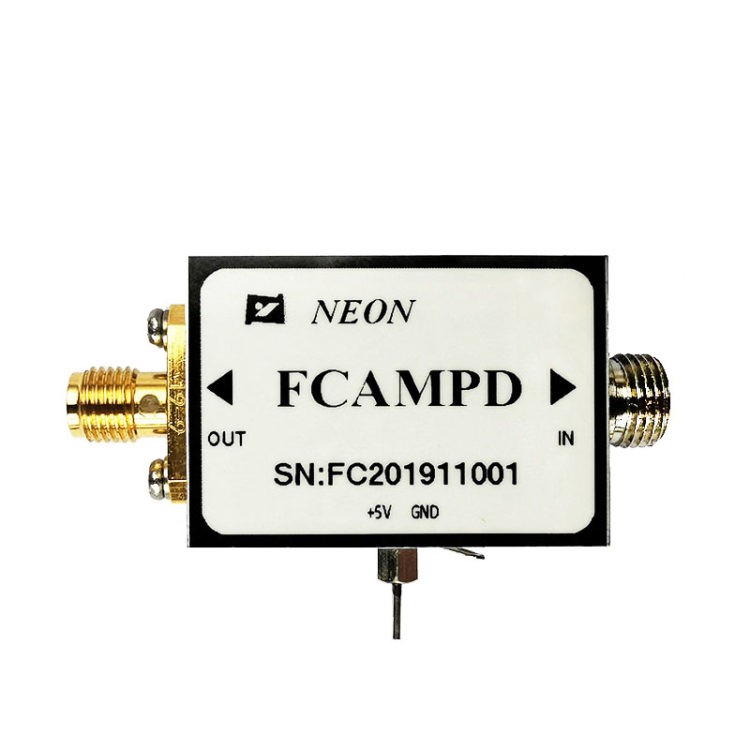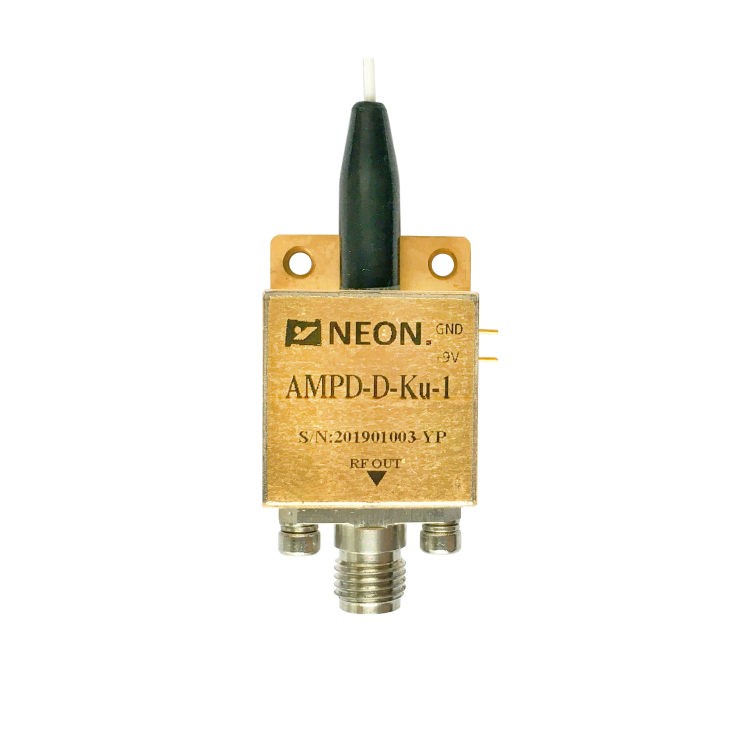What Are the Types of Amplified Photodetectors and How to Choose
Photodetectors, as essential sensing elements capable of converting light energy into electrical energy, are widely used in numerous fields such as communication, sensing, imaging, medical diagnostics, environmental monitoring, and fundamental scientific research. In many application scenarios, the light signals to be measured are often extremely weak, such as attenuated signals in long-distance optical fiber communication, bioluminescence, and astrophysical observations. Relying solely on traditional photodetectors often falls short of meeting the demands for effective detection and analysis of these faint light signals. Consequently, the development and application of amplified photodetectors have become paramount. Amplified photodetectors enhance the response to incident light and improve detection sensitivity and signal-to-noise ratio through various physical mechanisms or circuit designs, thereby enabling precise measurement of weak light signals. This article will systematically introduce several primary types of amplified photodetectors and their unique characteristics, as well as discuss their applications in different fields.
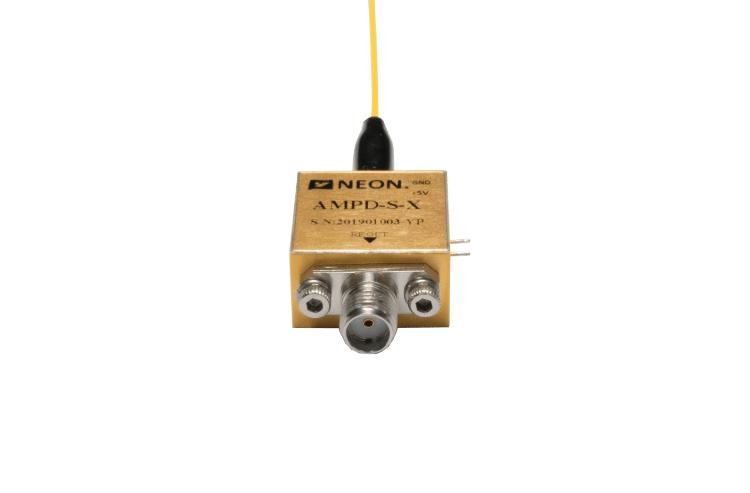
Type 1: Photodetectors with Internal Gain
Photodetectors with internal gain directly amplify the electrical signal converted from light signals within the device through the multiplication effect of photogenerated carriers, significantly enhancing detection sensitivity.
1. Avalanche Photodiodes (APDs)
An Avalanche Photodiode is a semiconductor photodetector whose core operation relies on the PN junction under a high reverse bias voltage. When photons incident on the depletion region of the APD generate electron-hole pairs, these carriers are accelerated by the strong electric field and collide with lattice atoms. When the energy of the carriers is sufficiently high, these collisions cause valence band electrons to be excited to the conduction band, generating additional electron-hole pairs – a process known as impact ionization. The newly generated carriers are then accelerated and trigger further impact ionization, leading to a chain reaction, or avalanche effect. Through this multiplication process, a single incident photon can generate a large number of electron-hole pairs, thus achieving internal current amplification.
Key Characteristics of Avalanche Photodiodes
- High Sensitivity: The internal gain (typically between 10 and several hundred) significantly enhances the ability to detect faint light signals, allowing APDs to detect weaker light signals than ordinary PIN diodes.
- Fast Response Speed: APDs generally have a faster response speed than PIN diodes, attributed to their specific structure and operating mechanism, making them suitable for high-speed optical communication and rapid light signal detection.
- Low Noise (at High Gain): Although the avalanche process itself introduces additional noise (avalanche noise), under appropriate bias voltage and gain conditions, the signal-to-noise ratio of APDs is often superior to that of ordinary photodiodes requiring external high-gain amplifiers.
- High Voltage Requirement: The operation of APDs requires a high reverse bias voltage (tens to hundreds of volts), which increases the complexity of power supply design.
- Gain Dependence on Temperature and Bias Voltage: The gain of an APD is highly sensitive to temperature and bias voltage, necessitating precise control circuits to maintain gain stability and ensure measurement accuracy.
Typical Applications of Avalanche Photodiodes
- Long-distance Optical Fiber Communication: As a core component of optical receivers, APDs can detect weak light signals attenuated after long-distance transmission.
- Laser Ranging: The high sensitivity and fast response of APDs enable precise detection of weak reflected laser pulses, achieving accurate distance measurements.
- Low-light Imaging: In night vision devices and low-light cameras, APDs can amplify faint light signals, enabling clear imaging.
- Single-Photon Detection (Geiger Mode): Under a specific high bias voltage (above the breakdown voltage), APDs can operate in Geiger mode, generating a detectable current pulse for each incident photon, used in single-photon counting and quantum optics research.
Summary of Advantages and Disadvantages: APDs offer high sensitivity and fast response but require high voltage drive, and their gain is sensitive to environmental factors.
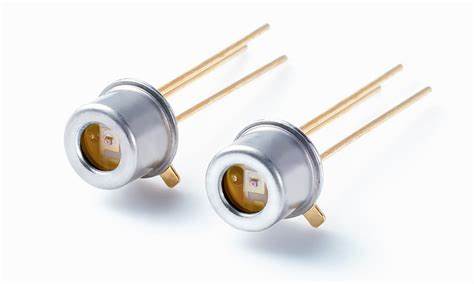
2. Photomultiplier Tubes (PMTs)
A Photomultiplier Tube is a vacuum electronic device that utilizes the photoelectric effect and secondary electron emission to achieve extremely high signal amplification. When incident photons strike the photocathode material of the PMT, the photoelectric effect releases photoelectrons. These photoelectrons are accelerated by the electric field applied between the photocathode and the first dynode and strike the first dynode. The surface of the dynode is coated with a special material that releases more secondary electrons upon impact by high-energy electrons. These secondary electrons are then accelerated and strike the next dynode, repeating the process of secondary electron emission. PMTs typically contain multiple stages (e.g., 9 or more) of dynodes, with each stage multiplying the number of electrons. Finally, the electrons amplified through multiple stages are collected at the anode, forming a measurable current pulse whose intensity is much greater than the number of photoelectrons initially emitted by the photocathode, thus achieving extremely high signal amplification.
Key Characteristics of Photomultiplier Tubes
- Extremely High Sensitivity (Single-Photon Detection Capability): PMTs have extremely high gain and can detect signals generated by single incident photons, making them ideal for detecting very faint light signals.
- Very High Gain: The gain of a PMT can reach 105 to 108 or even higher, significantly greater than that of APDs.
- Fast Response Speed: PMTs typically have response speeds in the nanosecond range, suitable for detecting rapidly changing light signals.
- Low Noise (at High Gain): Although PMTs also have background noise, their signal-to-noise ratio is usually excellent when detecting extremely weak light at high gain.
- Large Size: Compared to solid-state detectors, PMTs are larger and bulkier.
- High Voltage Requirement: The operation of PMTs requires high voltage power supplies ranging from hundreds to thousands of volts, increasing system complexity and safety requirements.
- Sensitivity to Strong Light: Excessive incident light can damage PMTs.
Typical Applications of Photomultiplier Tubes
- Fluorescence Spectroscopy: Used to detect weak fluorescence signals, widely applied in biochemical analysis and medical diagnostics.
- Scintillation Detection: In nuclear and high-energy physics experiments, used to detect scintillation light caused by particles and measure particle energy.
- Chemiluminescence: Used to measure weak light signals generated during chemical reactions.
- Particle Physics: Used to detect faint particle signals generated in cosmic rays and accelerator experiments.
- Astronomical Observations: Used to detect weak light signals from distant celestial bodies.
Summary of Advantages and Disadvantages: PMTs offer extremely high sensitivity and gain but are large, require high voltage, and are sensitive to strong light.
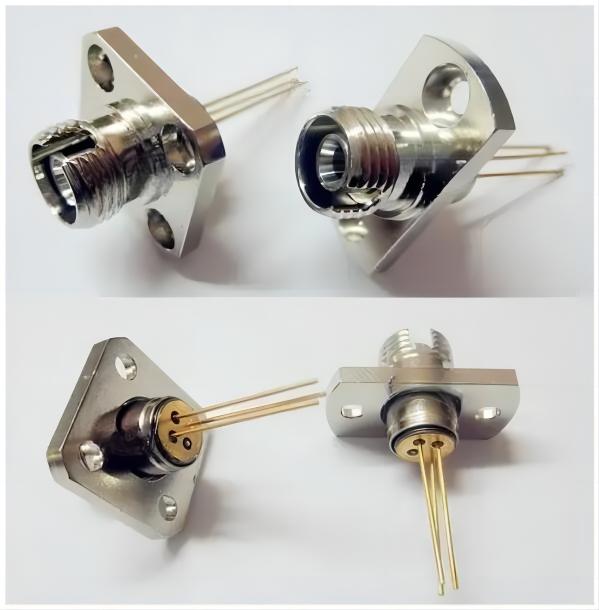
Type 2: Photodetectors Combined with External Amplification Circuits
For some applications with strict requirements on cost, size, or operating voltage, ordinary photodiodes (such as PIN diodes) are often used in conjunction with external amplification circuits to achieve signal amplification.
1. PIN Photodiode + Transimpedance Amplifier (TIA)
A PIN photodiode converts incident light signals into current signals, with the current magnitude proportional to the incident light intensity. Since the photocurrent is usually very weak, a Transimpedance Amplifier (TIA) is used to convert it into a voltage signal with a higher amplitude. A TIA is a specialized operational amplifier circuit whose core element is a feedback resistor. The weak input current flows through the feedback resistor, generating a corresponding voltage output according to Ohm’s law, thus achieving current-to-voltage conversion and amplification. The gain of the TIA can be adjusted by selecting an appropriate feedback resistor value.
Key Characteristics of PIN Photodiode + Transimpedance Amplifier
- High Flexibility (Selectable Gain and Bandwidth of TIA): TIA chips with different gain and bandwidth characteristics can be selected or custom TIA circuits can be designed according to specific application requirements.
- Relatively Low Cost: Compared to APDs and PMTs, the cost of PIN diodes and TIAs is usually lower.
- Wide Spectral Response: PIN diodes have a broad spectral response range, covering ultraviolet, visible, and near-infrared wavelengths.
- Noise Characteristics Depend on TIA Design: The noise characteristics of the TIA directly affect the signal-to-noise ratio of the entire detection system, requiring the selection of low-noise TIAs to achieve good performance.
Typical Applications of PIN Photodiode + Transimpedance Amplifier
- Optical Power Measurement: Used to measure the optical power of various light sources.
- Optical Communication Receivers: As the front-end of short-distance or low-speed optical communication systems, converting received optical signals into electrical signals.
- Various Optical Sensing Applications: Such as photometers, color sensors, and proximity sensors.
Summary of Advantages and Disadvantages: The PIN diode plus TIA scheme offers low cost and wide spectral response, but its sensitivity is limited by the noise of the TIA.
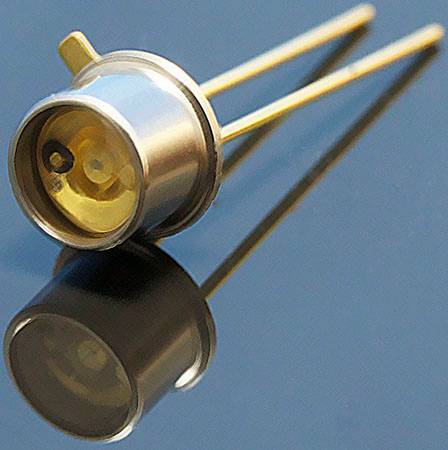
2. PIN Photodiode + Voltage Amplifier
Similar to the TIA scheme, the PIN diode converts light into current, which is then converted into a voltage signal through a load resistor. Subsequently, a voltage amplifier (such as an operational amplifier configured as a voltage amplifier circuit) is used to amplify this voltage signal.
Key Characteristics of PIN Photodiode + Voltage Amplifier
- Simple Circuit: The circuit may be simpler than a TIA circuit, especially when only low gain is required.
- Potentially Higher Noise: High impedance output is susceptible to noise interference, and the voltage amplifier itself can introduce noise.
- Potentially Limited Bandwidth: The load resistor and the junction capacitance of the diode form an RC circuit, limiting the system’s bandwidth.
Typical Applications of PIN Photodiode + Voltage Amplifier
- Some low-speed or noise-insensitive simple optical sensing applications.
Summary of Advantages and Disadvantages: Simple circuit, but higher noise and potentially limited bandwidth.
Type 3: Photodetectors Enhanced by Other Amplification Mechanisms
In recent years, several emerging technologies have been used to enhance the performance of photodetectors, achieving higher sensitivity and efficiency.
1. Grating-Coupled Surface Plasmon Resonance (SPR) Enhanced Photodetectors
Surface Plasmon Resonance is an optical phenomenon that occurs at the interface between a metal and a dielectric. When incident light illuminates a grating structure coated with a thin metal film at a specific angle, surface plasmon waves can be excited. When the frequency and wavevector of the incident light match the resonance conditions of the surface plasmon waves, a strong localized electromagnetic field is generated on the metal surface, significantly enhancing the interaction between light and the active region of the detector, thereby increasing light absorption and photocurrent generation.
Key Characteristics: Wavelength-selective enhancement, improved quantum efficiency and responsivity, integrability.
Typical Applications: Biosensing, high-sensitivity spectroscopy.
2. Quantum Dot Enhanced Photodetectors
Quantum dots are semiconductor nanocrystals with sizes ranging from a few to tens of nanometers, exhibiting unique optical and electronic properties. By integrating quantum dots into photodetectors, their efficient light absorption, tunable spectral response, and potential multiple exciton generation (one high-energy photon generates multiple electron-hole pairs) can be utilized to improve photoelectric conversion efficiency and detection sensitivity.
Key Characteristics: Tunable spectral response, potential to achieve efficiencies beyond the traditional Shockley-Queisser limit.
Typical Applications: Next-generation solar cells, high-sensitivity photodetectors.
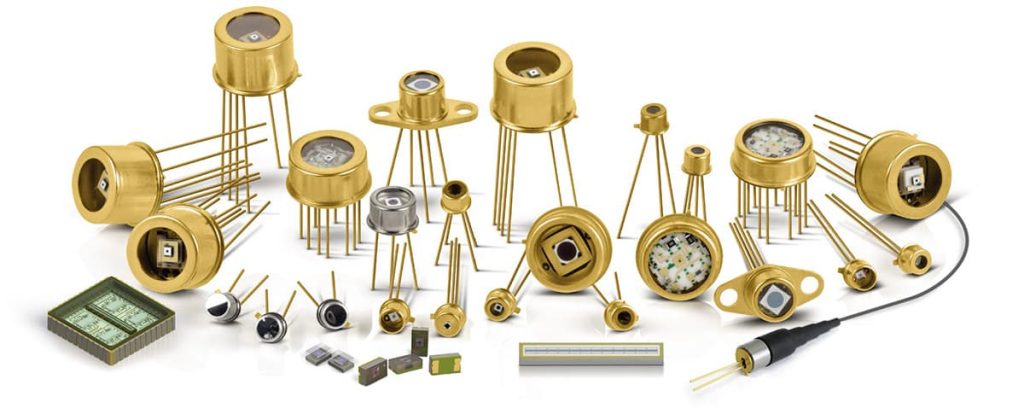
Selection and Application Considerations for Amplified Photodetectors
Selecting the appropriate amplified photodetector necessitates careful consideration of specific application needs and a trade-off analysis of key performance indicators. These indicators include:
- Sensitivity: The ability of the detector to detect the minimum measurable light signal.
- Response Speed: The detector’s capability to respond to rapidly changing light signals.
- Noise: A critical factor affecting the signal-to-noise ratio of the detection.
- Cost: The financial implications of the detector and associated circuitry.
- Size: The physical dimensions of the photodetector and any necessary supporting components.
- Power Consumption: The amount of electrical power required for the detector’s operation.
- Operating Voltage: The voltage levels required for the detector to function correctly.
Examples of Application-Specific Considerations:
1. Extremely Weak Light Detection
Potential Best Choice: Photomultiplier Tubes (PMTs) due to their exceptional sensitivity.
2. Portable Devices with Strict Size and Power Consumption Requirements
Potentially Suitable Choices: Avalanche Photodiodes (APDs) or PIN Diodes combined with low-noise Transimpedance Amplifiers (TIAs)
3. High-Speed Optical Communication
Widely Used Choice: Avalanche Photodiodes (APDs) due to their fast response speed.
4. Emerging Applications
Potential Choices: Surface Plasmon Resonance (SPR) enhanced detectors and Quantum Dot enhanced detectors show significant potential in specific application areas requiring tailored sensitivity or spectral response.
The selection process should involve a thorough evaluation of these factors in relation to the specific demands of the intended application.
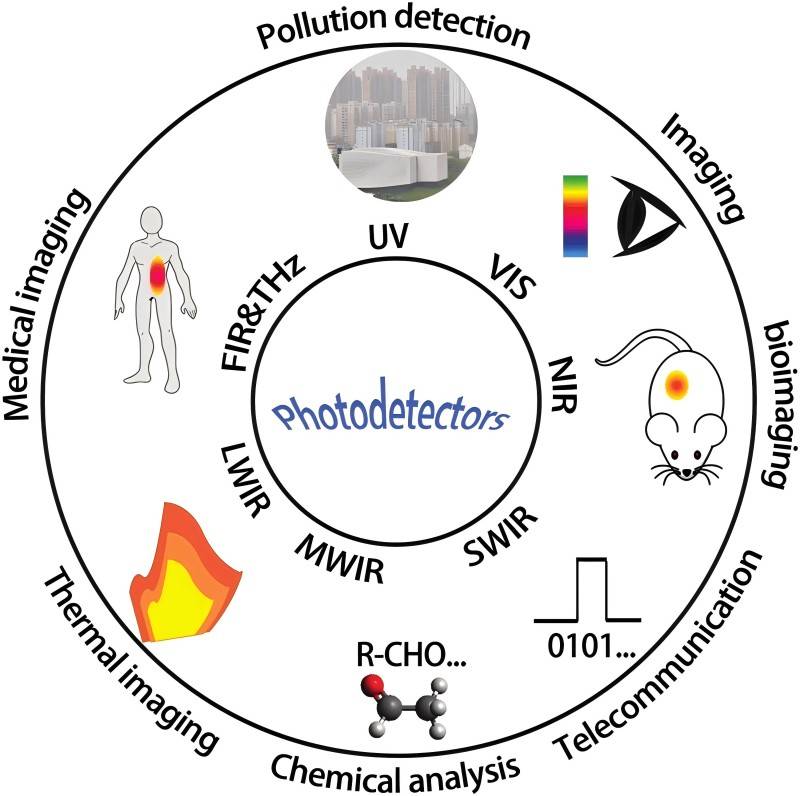
Key Takeaways
Amplified photodetectors are a crucial component of modern optoelectronic technology, and their development and application have greatly expanded our ability to detect and analyze light signals. From traditional APDs and PMTs with internal gain to PIN diode schemes combined with external amplification circuits, and emerging technologies based on SPR and quantum dot enhancement, each type has its unique characteristics and advantages, suitable for different application scenarios. With continuous technological advancements, future amplified photodetectors will move towards integration, miniaturization, higher sensitivity, wider spectral response, and lower power consumption, playing an increasingly important role in scientific research, industrial applications, and everyday life.


